The Coca-Cola Company owns a product portfolio of over 3500 products. From the superstar ‘Coca-Cola’, Fanta, and Vita in Africa, to Thums Up in India, you’d be surprised to know that it’s all owned by The Coca-Cola Company.
The Coca-Cola Company has a presence in more than 200 countries. It has been listed as the world’s most valuable brand serving a daily average of 1.9 billion people. 94% of the world’s population recognizes the red and white Coca-Cola logo. And around 3.1% of all beverages consumed around the world are owned by Coca-Cola.
All of this was made possible because of Coke’s impeccable marketing and branding strategy which we’ll dive into in this article.

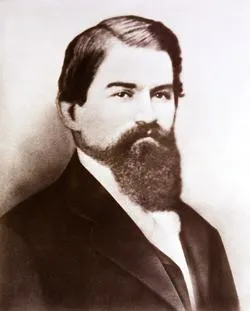
John Styth Pemberton, a pharmacist in Atlanta, Georgia invented Coca-Cola in 1886. It was brewed in a brass pot in Pemberton’s backyard as a syrup of sorts.
Even at this early stage, Frank M Robinson, Pemberton’s partner, was aware of the power of branding. He cleverly used alliterations and named the dark brown liquid ‘Coca-Cola’.
After laying the foundation for the product and the brand, the two partners sold their interests to Asa G Candler, an Atlanta Businessman, in 1888. Candler was a marketing genius and under him, Coca-Cola flourished as a trademark in 1893. He ensured that the Coca-Cola trademark appeared on everything, from clocks to glass chandeliers.
Thanks to Candler’s skill and vision, Coke was available in every US state by 1895.
The Candler family sold the Coca-Cola Company to Ernest Woodruff, an Atlanta Banker, in 1919. In 1923, when Ernest’s son Robert was elected president of the company, he decreed ‘Coca-Cola should always be within an arm’s reach.’ To this day, this principle remains central to the company’s distribution strategy.
Robert Woodruff maintained a standard of excellence as the company grew. He positioned Coca-Cola as a premium product that was worthy of way more attention than any of its competitors. Coca-Cola grew rapidly throughout the world.
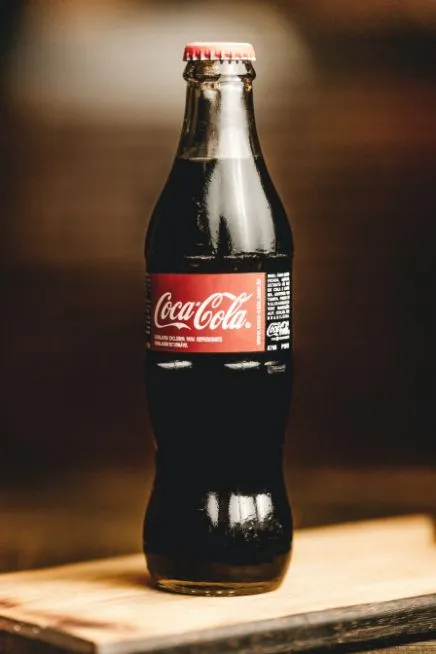
Coca-Cola in its early days (Candler’s era) was sold only through soda fountains. But Benjamin Thomas and Joseph Whitehead, two ingenious minds, secured exclusive rights for bottled Coca-Cola sales from Candler, at just $1.
As we know, its bottling operations are the backbone of Coca-Cola’s distribution. In 1894, a shopkeeper set up the first bottling device to trade crates of Coke across the Mississippi River. In 1926, the bottling operations spread abroad.
The famous Coca-Cola glass ‘Contour’ bottle was actually designed in 1915, to protect the brand from its growing imitators. The army of imitators was determined to cash on Coca-Cola’s success. To prevent this and send out a message to its consumers that there was only one authentic Coca-Cola, the ‘Contour’ bottle originated.
Its designers (the Root Glass Company of Terre Haute, Indiana) were instructed to create a bottle that a person would recognize, even if felt in the dark. Furthermore, the bottle should be shaped so, even if broken, a person could tell what it was.
The famous trademark design hasn’t been changed until now.

The best strategy adopted by Coca-Cola is not changing the design of the logo and glass bottle.
The name and Trademark Logo was the idea of Frank Robinson, Pemberton’s accountant. Furthermore, Frank designed the logo in his own handwriting.

In 1886, John Pemberton wanted to create his own version of coca wine (cola with alcohol and cocaine), which wasn’t a new idea back then. The original idea of Coca wines was of Angelo Mariani, a Parisian chemist.
John sent his nephew Lewis to conduct market research with his samples. Pemberton’s first samples were sold for 5 cents a glass. With the feedback from his customers, Pemberton tailored a unique recipe according to the taste of his customers.
Pemberton soon made the recipe non-alcoholic because of the laws in Atlanta. The initial product was marketed by Pemberton as a “Brain Tonic”, claiming that it cured depression, anxiety, and addiction.
Cocaine wasn’t removed from Coke until 1903.
Candler in 1889, converted it into a soda drink, and that’s where the real marketing began.
Candler distributed thousands of complimentary Coca-Cola glass coupons, along with souvenir clocks and calendars, just so the name was everywhere. He would also paint the syrup barrels red to differentiate Coca-Cola from others.
Coca-Cola is truly the king of the global market. The Coca-Cola Company has been consistently voted as a Superbrand, and it is the best-selling FMCG brand in Great Britain.
The aim of The Coca-Cola Company is to refresh consumers with their choice of non-alcoholic beverages, ranging from juices, water to carbonated soft drinks. The products continue to perform well, displaying steady long-term growth.
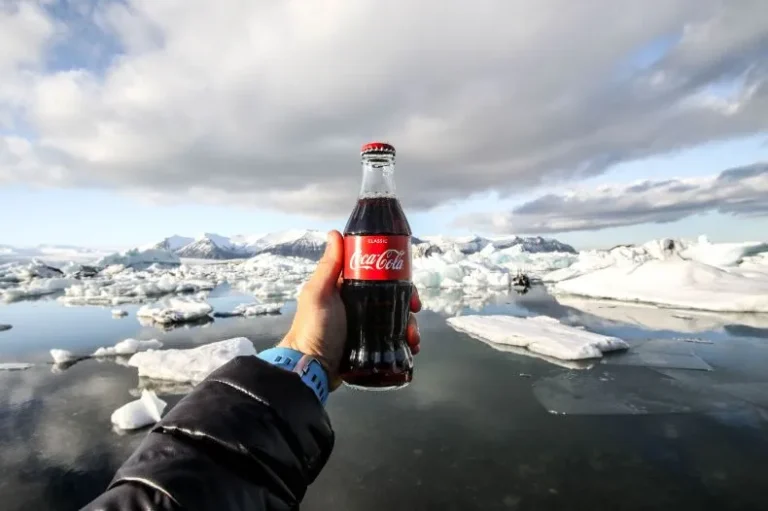
The worldwide popularity of Coca-Cola can be accredited to simple yet effective marketing strategies like:
Coca-Cola has kept its slogans simple with every slogan revolving around the two terms: ‘Enjoy’ & ‘Happiness’. Not just that, consistency can also be seen in the logo and the iconic bottle design.
Candler created the trend to make Coca-Cola visible everywhere with his calendars, watches, and other unrelated products (all trademarked with the Coca-Cola logo).
The company has followed a similar branding strategy till now. Coca-Cola is everywhere. And as the world’s most renowned logo.
Coca-Cola never positioned itself as a product. It was and is an ‘Experience’ of joy and bliss.
Coca-Cola has maintained itself as a social brand. Unlike other big companies, it talks to the users. With its iconic advertising campaigns like “Share a Coke”, it has maintained a special spot in the heart of its consumers.
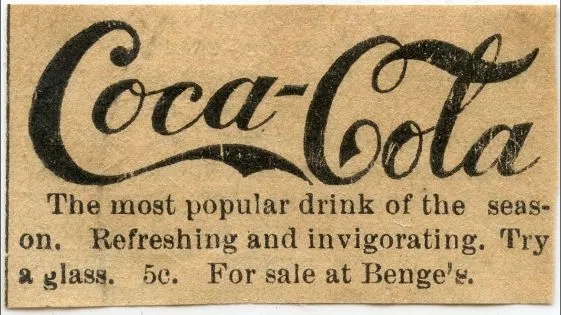
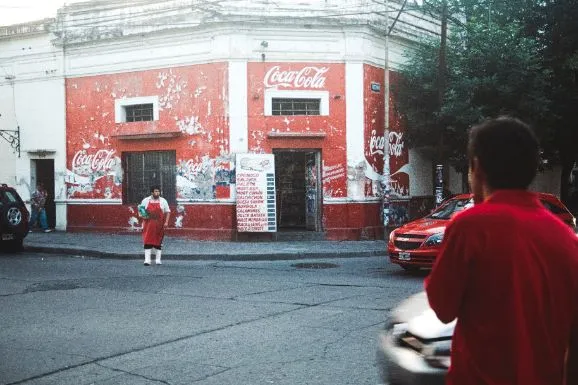
The first-ever Coca-Cola advertisement was on an oilcloth sign, bearing the phrase ‘Refreshing and Invigorating’.
In 2002, Coca-Cola ran an advertisement in Great Britain based on specific British insights. The ad showcased an animated story of a Leggsy, a three-legged boy. LEGGSY scores the winning goal for England at the World Cup.
You can check the ad out from here. Watch 2002 Coca-Cola Ad
In 2002, the classic Coca-Cola bottles were rebranded as a modern icon. It took on a modern, highly sensuous look, and the curves of the bottle were juxtaposed with the curves of the human body.
Coke continues to innovate with its impactful promotion ideas. In 2001, ‘Music4You’ was the biggest-ever music promotion for Coca-Cola. In 2002, Coke linked with NME, the most credible music magazine in Great Britain, and offered thousands of gig tickets and ‘access all areas’ experience to music fans.
In 2001, Coca-Cola used its link with Warner Brothers to launch a three-year worldwide partnership with ‘Harry Potter and the Philosopher’s Stone.’ As part of this partnership, Coke pledged to distribute 3,000,000 books to community libraries in Great Britain.
Coke has had a long heritage of supporting football. Naturally, Coca-Cola has sponsored every World Cup tournament since 1978.
The brand has created several major grassroots tournaments that encourage children to get out and enjoy playing the game.
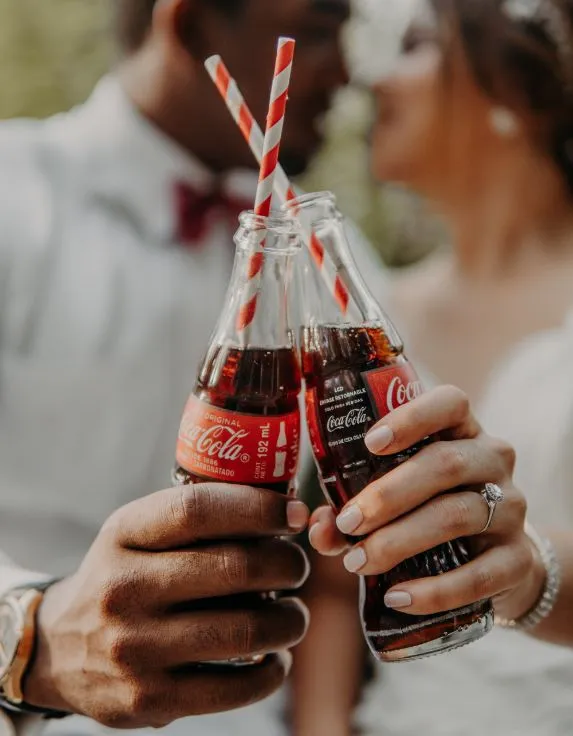
Coca-Cola is known for being the world’s biggest brand. The brand’s personality has the following characteristics:
On average, coke touches consumers over 50 times a day.
The taste of Coke brings ‘thirst-quenching and energising refreshment’ when served ‘ice-cold’.
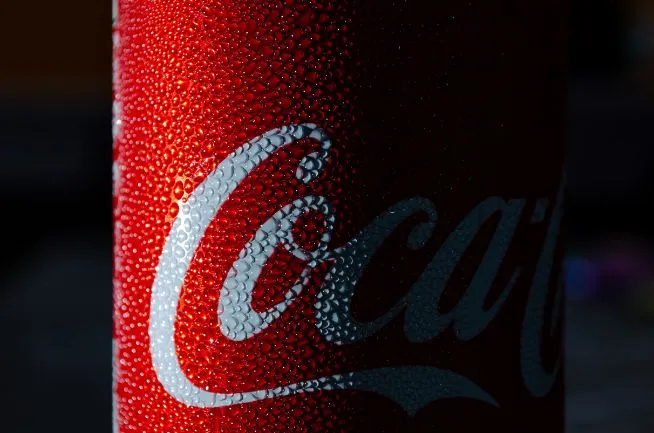
With 94% global recognition, ‘Coca-Cola’ is the most recognized trademark in the world.
‘Coca-Cola’ is the second most widely understood word in the world, after ‘OK’.
Diet Coke, launched in 1982, is the most popular diet soft drink in the world.
The strength of this global success lies in the local connections coke builds every day with its consumers. That, and the extremely successful combination of global distribution and powerful marketing.
Its strategy is still the very same, as outlined by Robert Woodruff: Nobody should be more than a few minutes away from the opportunity to buy a coke. This strategy is supported by the biggest and most widespread bottling and distribution networks in the world, which sends Coca-Cola to all corners of the globe.
Its marketing is visionary, creating one of the first-ever global advertising campaigns with the 1979 ad ‘I’d like to buy the world a Coke’. Through sponsoring major global sporting events such as the FIFA World Cup and the Olympic Games, the brand taps into the national passion for sport and is present when nations come together.
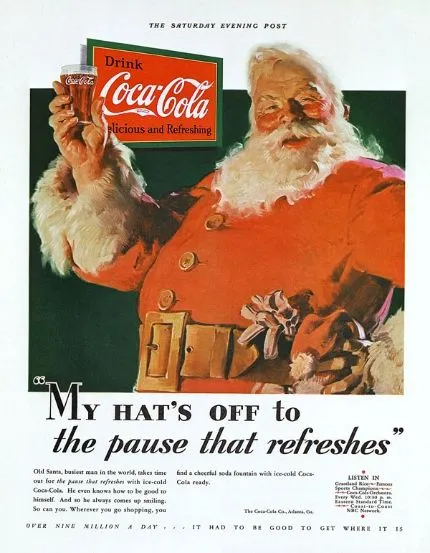
This site is protected by reCAPTCHA and the Google Privacy Policy and Terms of Service apply.